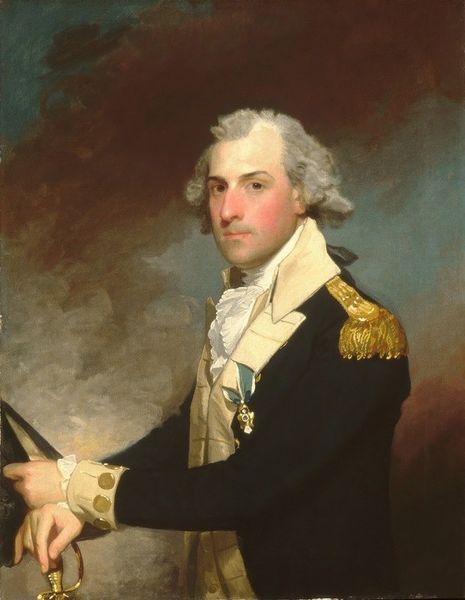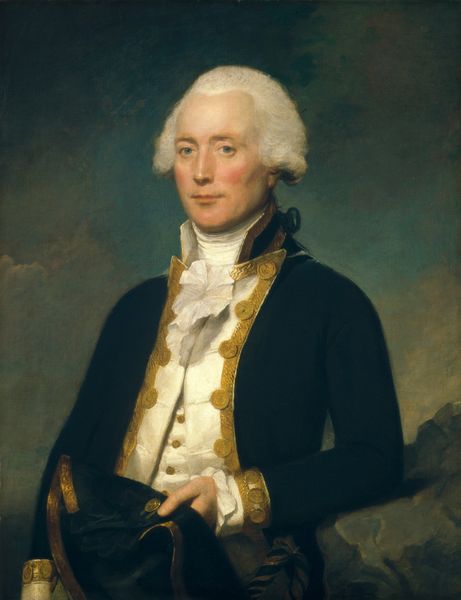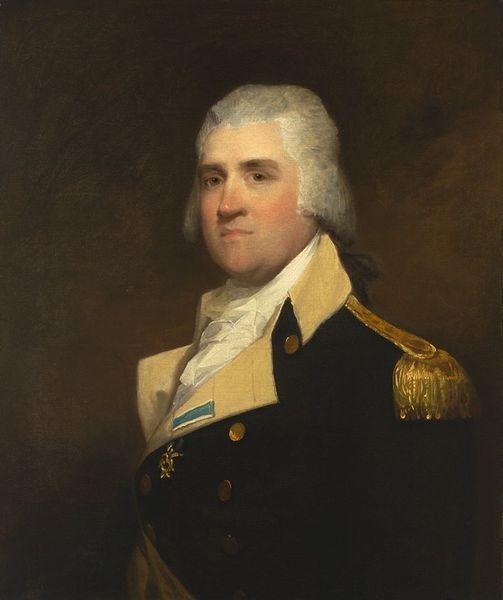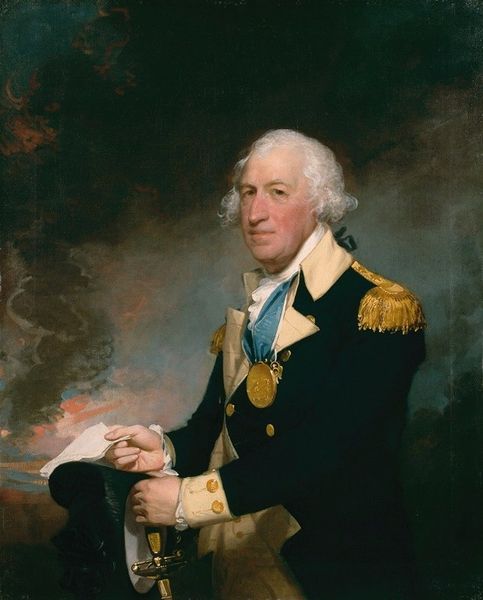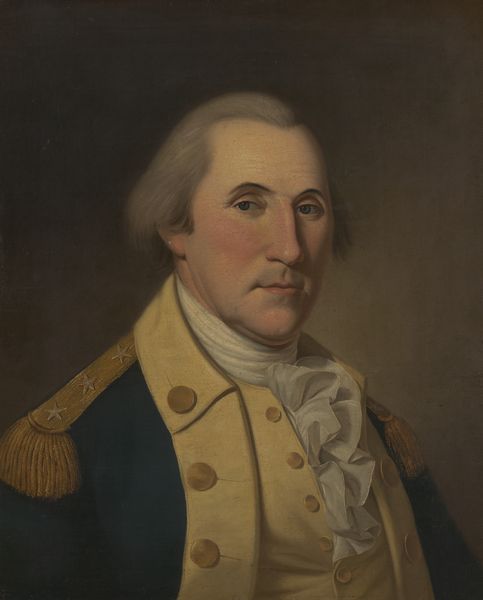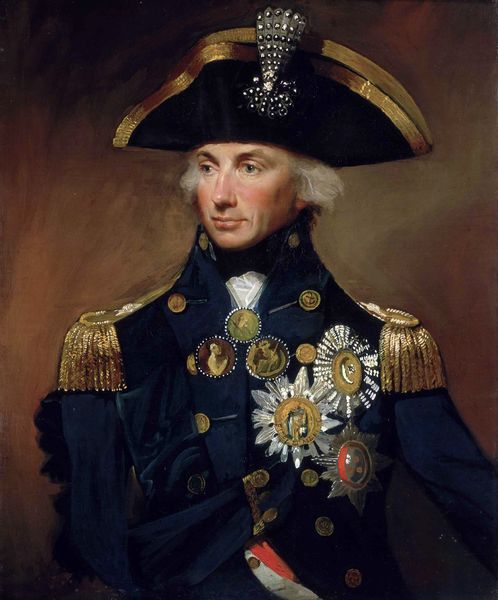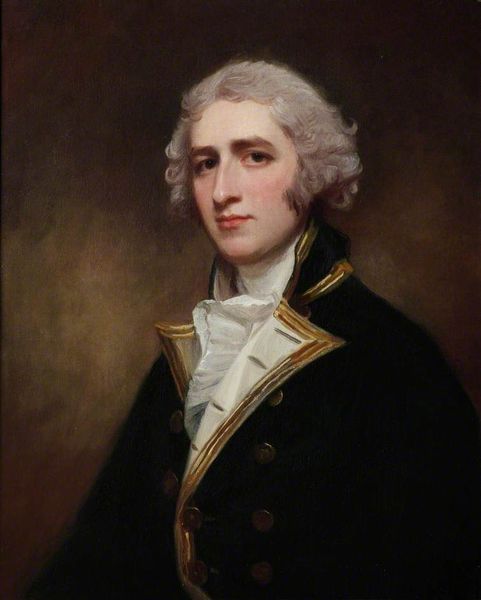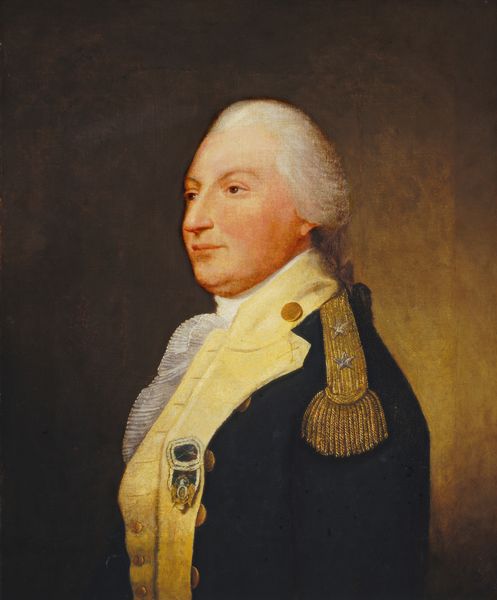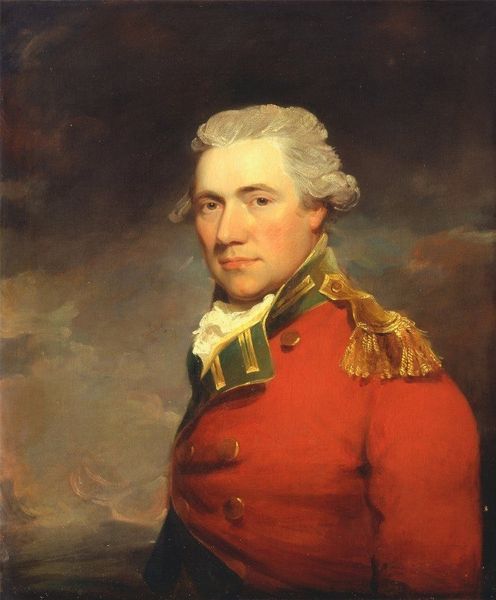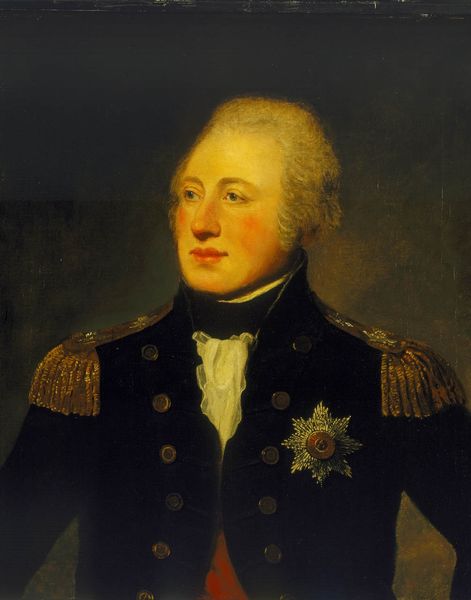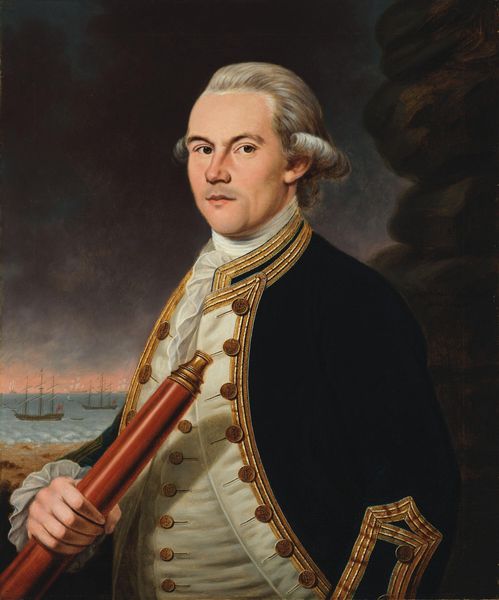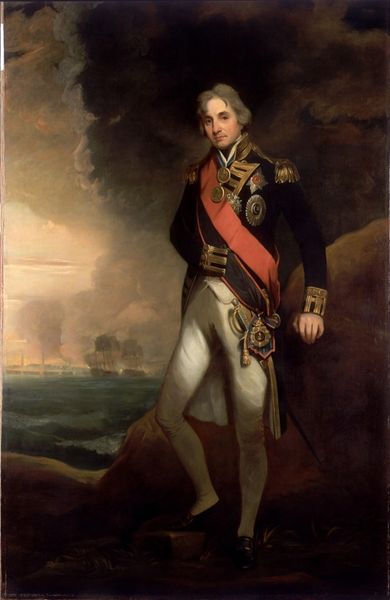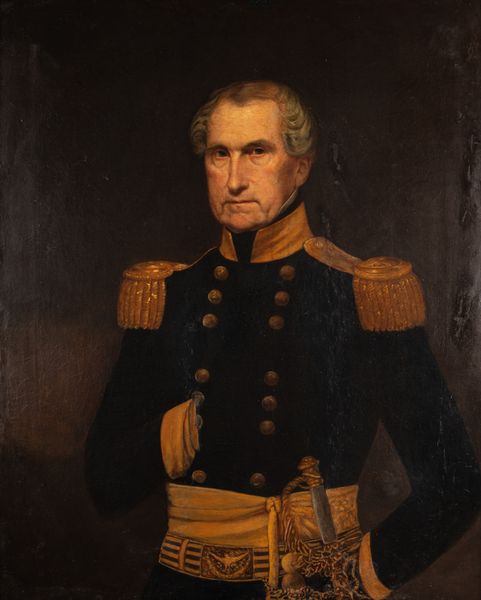
#
portrait image
#
portrait
#
portrait reference
#
portrait head and shoulder
#
animal drawing portrait
#
portrait drawing
#
facial portrait
#
portrait art
#
fine art portrait
#
digital portrait
Copyright: Public domain
Editor: Here we have Lemuel Francis Abbott’s "Horatio Nelson," painted in 1797. It’s a commanding portrait. I’m immediately drawn to the contrast between the crisp, bright details of his face and uniform against the dark, almost indistinct background. What strikes you when you look at it? Curator: The artist employs a masterful command of light and shadow to construct spatial relationships. Notice how the geometric clarity of the composition emphasizes a subtle tension between the portrait's surface and the implied depth of the depicted space. How does that spatial rendering affect your interpretation? Editor: It’s like he’s present and absent at the same time. The depth grounds him, but that intense lighting isolates him, too. The background seems to be a field of brushstrokes and colours. Almost atmospheric! Curator: Exactly. And how does that atmospheric quality serve to heighten the visual impact? We could see this painting as existing only because of its use of form and space, where texture becomes signifier, communicating power and a degree of austerity. Editor: So, beyond it simply being a portrait, the artist seems to really emphasize the play of light and shadow and that controlled geometry almost speaks to his character, his presence...it adds more depth to the representation, doesn't it? Curator: Precisely. Abbott wields artistic components into what becomes an emotional tool. Editor: This gives me a new appreciation for portraits. Looking past just likeness into how shape, shadow, and space carry weight within the art. Curator: I am gratified to hear that, for true artistry emerges from the manipulation of forms.
Comments
No comments
Be the first to comment and join the conversation on the ultimate creative platform.
